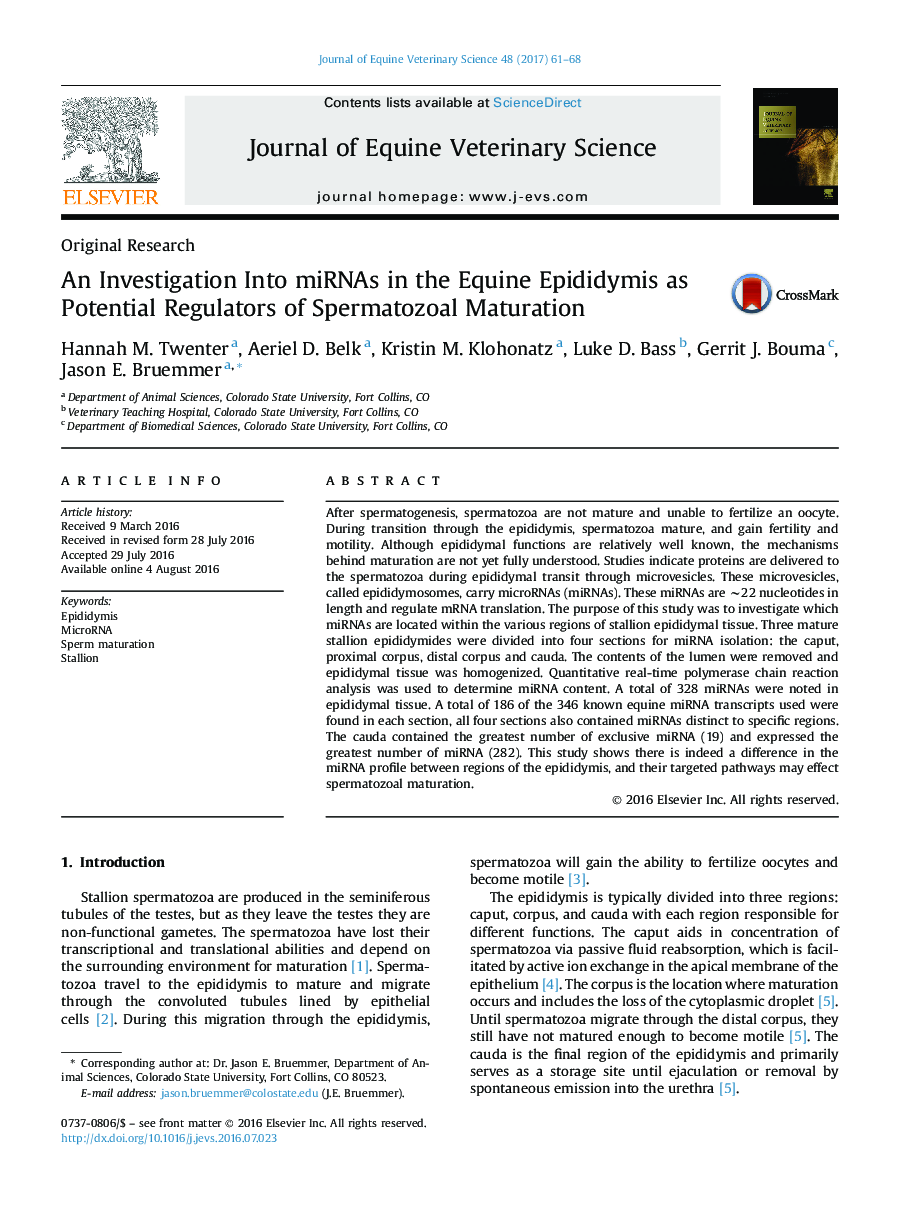| Article ID | Journal | Published Year | Pages | File Type |
|---|---|---|---|---|
| 5535716 | Journal of Equine Veterinary Science | 2017 | 8 Pages |
Abstract
After spermatogenesis, spermatozoa are not mature and unable to fertilize an oocyte. During transition through the epididymis, spermatozoa mature, and gain fertility and motility. Although epididymal functions are relatively well known, the mechanisms behind maturation are not yet fully understood. Studies indicate proteins are delivered to the spermatozoa during epididymal transit through microvesicles. These microvesicles, called epididymosomes, carry microRNAs (miRNAs). These miRNAs are â¼22 nucleotides in length and regulate mRNA translation. The purpose of this study was to investigate which miRNAs are located within the various regions of stallion epididymal tissue. Three mature stallion epididymides were divided into four sections for miRNA isolation: the caput, proximal corpus, distal corpus and cauda. The contents of the lumen were removed and epididymal tissue was homogenized. Quantitative real-time polymerase chain reaction analysis was used to determine miRNA content. A total of 328 miRNAs were noted in epididymal tissue. A total of 186 of the 346 known equine miRNA transcripts used were found in each section, all four sections also contained miRNAs distinct to specific regions. The cauda contained the greatest number of exclusive miRNA (19) and expressed the greatest number of miRNA (282). This study shows there is indeed a difference in the miRNA profile between regions of the epididymis, and their targeted pathways may effect spermatozoal maturation.
Related Topics
Life Sciences
Agricultural and Biological Sciences
Animal Science and Zoology
Authors
Hannah M. Twenter, Aeriel D. Belk, Kristin M. Klohonatz, Luke D. Bass, Gerrit J. Bouma, Jason E. Bruemmer,
